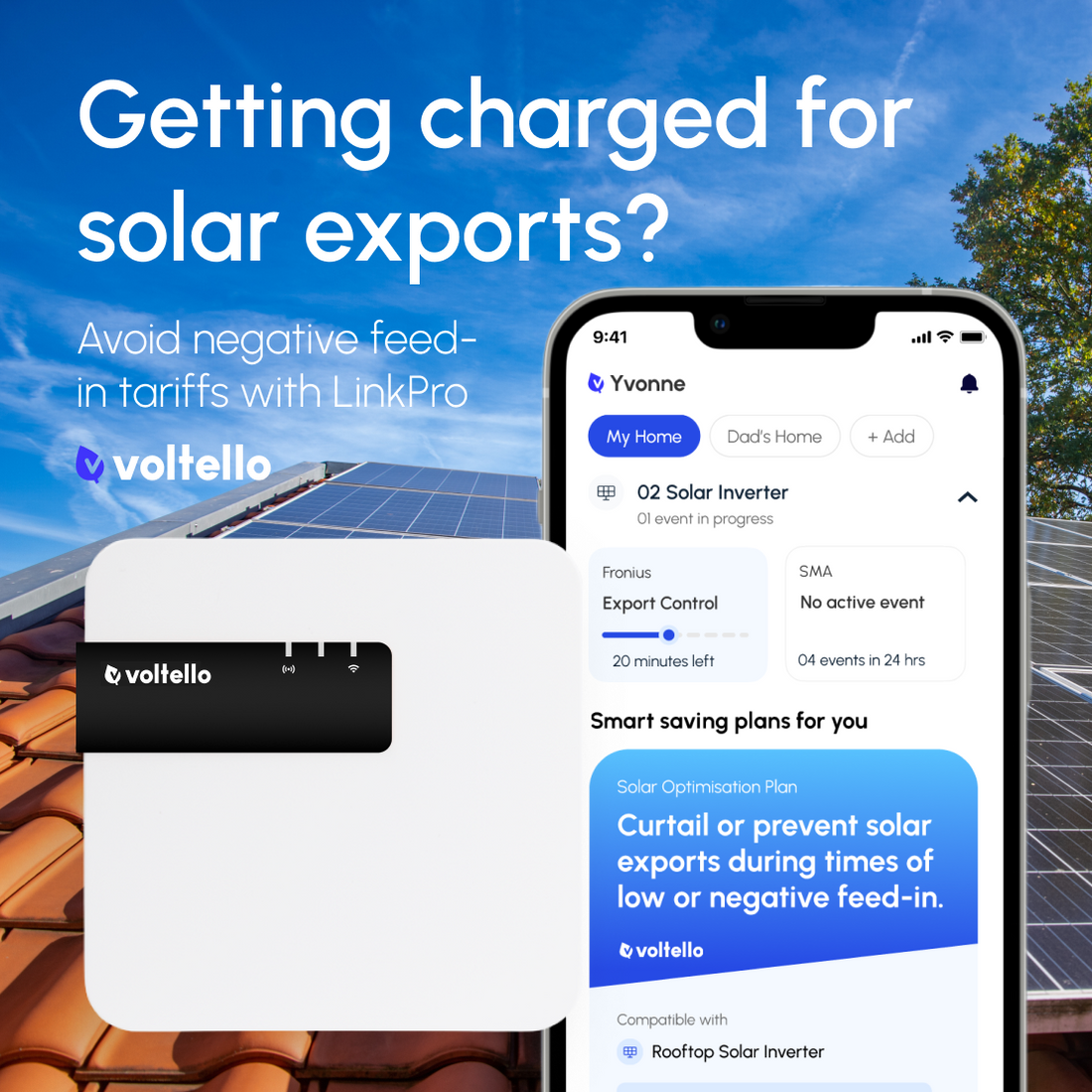Negative feed-in tariffs (FiTs) have become a growing concern for Australian households with solar systems. As solar energy production continues to rise, particularly in the middle of the day when demand is low, homeowners may find themselves paying to export energy to the grid. But what exactly are negative FiTs, who do they apply to, and how can you avoid them?
What Are Negative Feed-in Tariffs?
Negative feed-in tariffs occur when electricity prices in the energy market drop below zero. This happens when there's an oversupply of renewable energy, usually from solar panels, and not enough demand to absorb it. Instead of getting paid for the energy they export to the grid, solar customers may be charged for contributing excess energy, leading to what is known as a negative FiT.
Who Do Negative FiTs Apply To?
Negative FiTs typically affect households connected to wholesale pricing structures. In these cases, when grid prices turn negative, homeowners who continue exporting solar power will incur costs. While not all energy retailers expose their customers to these fluctuations, those who work with wholesale electricity markets often see negative FiT periods as a possibility.
Why Do Negative FiTs Happen?
The core reason behind negative FiTs is the imbalance between energy supply and demand. During peak solar production times, especially around midday, many solar-powered homes generate excess energy that floods into the grid. However, the demand for electricity at these times is often low, leading to a surplus. With more energy being fed into the grid than needed, market prices can drop into negative territory, forcing solar homeowners to pay for their exports.
How Can You Avoid Negative FiTs?
There are several strategies to reduce or eliminate exposure to negative FiTs:
1. Increase Your Energy Load
One straightforward solution is to increase energy consumption during peak solar production periods. Running appliances such as dishwashers, washing machines, or air conditioners during the middle of the day can reduce the amount of solar energy sent to the grid, minimising the risk of negative tariffs.
2. Turn Off Your Solar Inverter
Some households may choose to switch off their solar inverter during periods of negative FiT exposure. By doing so, you stop exporting energy altogether. However, this is a blunt approach and not ideal for most homes. You miss out on self-consuming your solar energy, which is usually more cost-effective than buying electricity from the grid.
3. Use Smart Energy Management Systems Like LinkPro
A more effective solution involves using smart energy management systems like the LinkPro Solar Management Gateway. The LinkPro allows for "load following" curtailment, automatically adjusting your solar production to match your household consumption. This minimises exports during negative FiT periods, ensuring you only generate the energy you need. Unlike on/off curtailment, which simply shuts down your inverter, load following curtailment optimises energy use while still allowing solar to power your home.
The LinkPro currently supports a range of solar inverters, including Fronius, Huawei/iStore, SMA, Sungrow, and FIMER, with plans to expand compatibility further. Whether you have a single inverter or multiple brands, the LinkPro provides an automated solution that takes the hassle out of managing solar exports during negative FiT events.
Final Thoughts
Negative FiTs are a reality for many Australian households connected to the wholesale energy market. While the idea of paying to export solar energy may seem counterintuitive, there are ways to minimise or avoid these costs altogether. Whether through simple load management or by using advanced tools like the LinkPro to automate solar curtailment, households can continue to enjoy the benefits of solar energy without worrying about unexpected charges.
Learn more about the LinkPro here.
